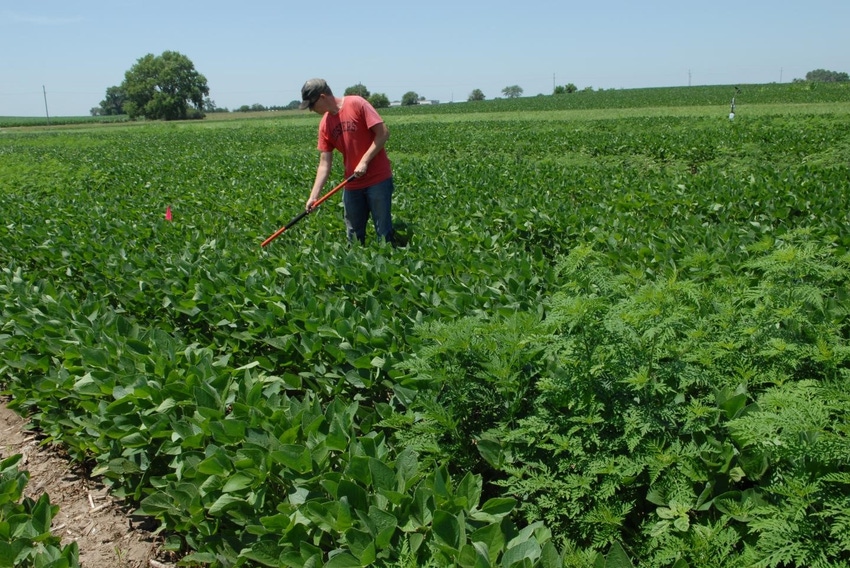Weed found to stifle soybean yields.
March 29, 2018

Ragweed may pose a larger threat to soybean production in the Midwest than previously understood, after University of Nebraska-Lincoln researchers determined that ragweed can drastically reduce soybean yields. "It wasn't really a weed we were worried about too much," said Ethann Barnes, a graduate research assistant in agronomy and horticulture. "We didn't expect it to be this competitive."
Weeds compete with crops for light, water and nutrients. Common ragweed, which is taller than soybean plants, historically has been overlooked as a threat, according to an announcement from the American Society of Agronomy.
So, the scientists headed to a soybean field near Mead, Neb., and planted soybean and ragweed in the late spring in 2015 and 2016. Within the experimental plots, ragweed density ranged from no plants (a weed-free control) to 12 plants per meter (about 39 in.) within the row.
The researchers had two goals: (1) see if ragweed posed a serious threat to soybeans, and (2) see if there's a way to estimate the yield loss early in the growing season.
Barnes was surprised by how much the ragweed stifled soybeans in both years. The soybean crops did worse than in previous studies. Having one ragweed plant every 1.6 ft. of soybean row decreased soybean yields by 76% in 2015 and by 40% in 2016. Soybean yields were reduced by 95% in 2015 and 80% in 2016 when common ragweed plants were grown only 3 in. apart in the soybean row.
During the experiment, there was plenty of water to go around for both the crop and weed alike, so the scientists think ragweed mostly hurt the soybean plants by starving them of sunlight.
"Whether I was presenting at conferences or even just at my thesis defense, everyone was very surprised by how big of a deal common ragweed could be," Barnes said.
What's more, it was very hard to predict early in the year how the soybeans would fare. Barnes found that when he plugged ragweed numbers into an equation, he couldn't accurately predict what the soybean loss would be until early August.
Now, Barnes and his team are sharing this information with growers in the area. "The ultimate goal of this area of science is for growers to count the number of weeds or make a measurement in their field three weeks into the season. From there, they could see whether it's financially a viable option to control their weeds or just leave them in the field," Barnes said. By knowing how much damage the weeds might do, farmers can weigh that loss against the cost of killing the weeds.
More studies will be needed to home in on the dynamics of ragweed growth and other weeds. An end goal, Barnes said, is to predict early in the season how weeds will impede crop yields so farmers can make better decisions on how to manage them. Such estimates could help farmers decide if they should apply pesticide -- and then when and how much.
He hopes his study is a step toward that goal. "Hopefully, it'll have an immediate impact for farmers and advance the science of weed competition research," Barnes said.
The study was published in Agronomy Journal.
You May Also Like


.png?width=300&auto=webp&quality=80&disable=upscale)
